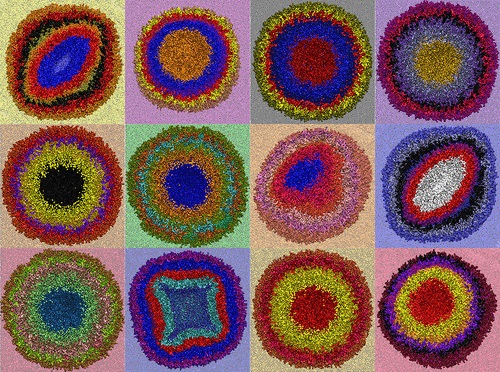In a recent ACS Nano paper, Luis Mayorga and Diego Masone shed some light on how these vesicles self-assemble, knowledge that could help scientists design bio-inspired vesicles for drug-delivery or inspire them to create life-like synthetic materials.

A representation of multilayer lipid vesicles inspired by “Color Study: Squares with Concentric Circles,” by the artist Wassily Kandinsky.
Double-membrane vesicles have inner and outer lipid bilayers. While scientists previously predicted that these membranes fold and warp themselves into a variety of shapes, researchers could not observe the rearrangement experimentally.
So, Mayorga and Masone used molecular dynamics calculations together with an algorithm developed by Bart Bruininks and colleagues to virtually “segment” the layers so they can be seen separately.
After running dozens of simulations with different vesicle sizes and lipid compositions, five common shapes were identified: oblates and prolates (elongated or flattened blobs), toroids (doughnuts), stomatocytes (cup shapes) and spheroids.
This work, say the researchers, offers insight into the “unexpected inner intricacies” of how lipid bodies spontaneously self-organize.
Read the original article on American Chemical Society (ACS).







